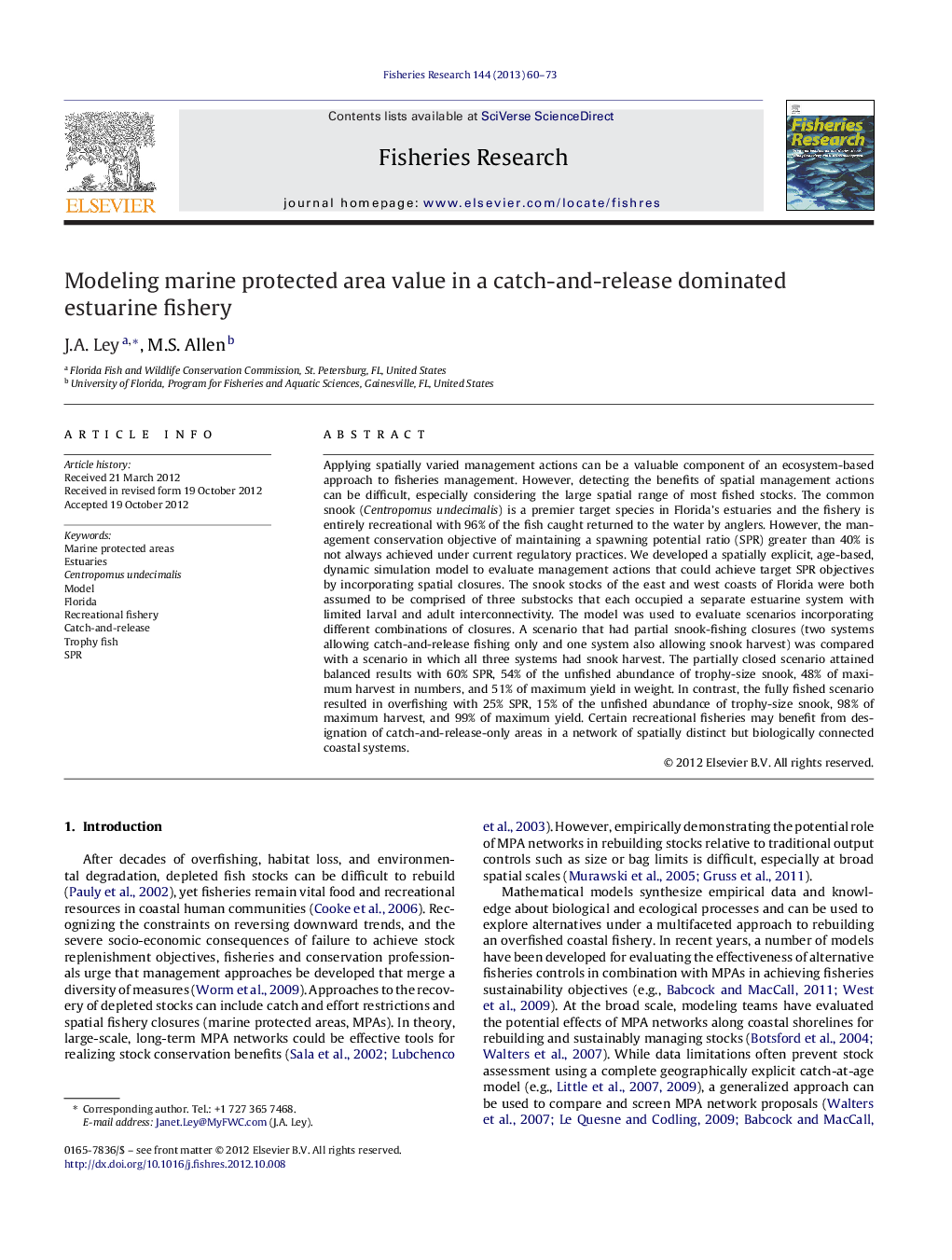| کد مقاله | کد نشریه | سال انتشار | مقاله انگلیسی | نسخه تمام متن |
|---|---|---|---|---|
| 6386023 | 1626824 | 2013 | 14 صفحه PDF | دانلود رایگان |
Applying spatially varied management actions can be a valuable component of an ecosystem-based approach to fisheries management. However, detecting the benefits of spatial management actions can be difficult, especially considering the large spatial range of most fished stocks. The common snook (Centropomus undecimalis) is a premier target species in Florida's estuaries and the fishery is entirely recreational with 96% of the fish caught returned to the water by anglers. However, the management conservation objective of maintaining a spawning potential ratio (SPR) greater than 40% is not always achieved under current regulatory practices. We developed a spatially explicit, age-based, dynamic simulation model to evaluate management actions that could achieve target SPR objectives by incorporating spatial closures. The snook stocks of the east and west coasts of Florida were both assumed to be comprised of three substocks that each occupied a separate estuarine system with limited larval and adult interconnectivity. The model was used to evaluate scenarios incorporating different combinations of closures. A scenario that had partial snook-fishing closures (two systems allowing catch-and-release fishing only and one system also allowing snook harvest) was compared with a scenario in which all three systems had snook harvest. The partially closed scenario attained balanced results with 60% SPR, 54% of the unfished abundance of trophy-size snook, 48% of maximum harvest in numbers, and 51% of maximum yield in weight. In contrast, the fully fished scenario resulted in overfishing with 25% SPR, 15% of the unfished abundance of trophy-size snook, 98% of maximum harvest, and 99% of maximum yield. Certain recreational fisheries may benefit from designation of catch-and-release-only areas in a network of spatially distinct but biologically connected coastal systems.
⺠An MPA network with catch-and-release and harvest areas benefited a recreational fishery. ⺠The MPA network equitably balanced conservation and angling objectives. ⺠With no MPAs short-term yield was favorable but sustainability (SPR) was at-risk. ⺠With MPAs SPR was >40% even when fishing mortality was >1.0. ⺠Release mortality rates >30% reduced benefits of catch-and-release MPAs.
Journal: Fisheries Research - Volume 144, July 2013, Pages 60-73
